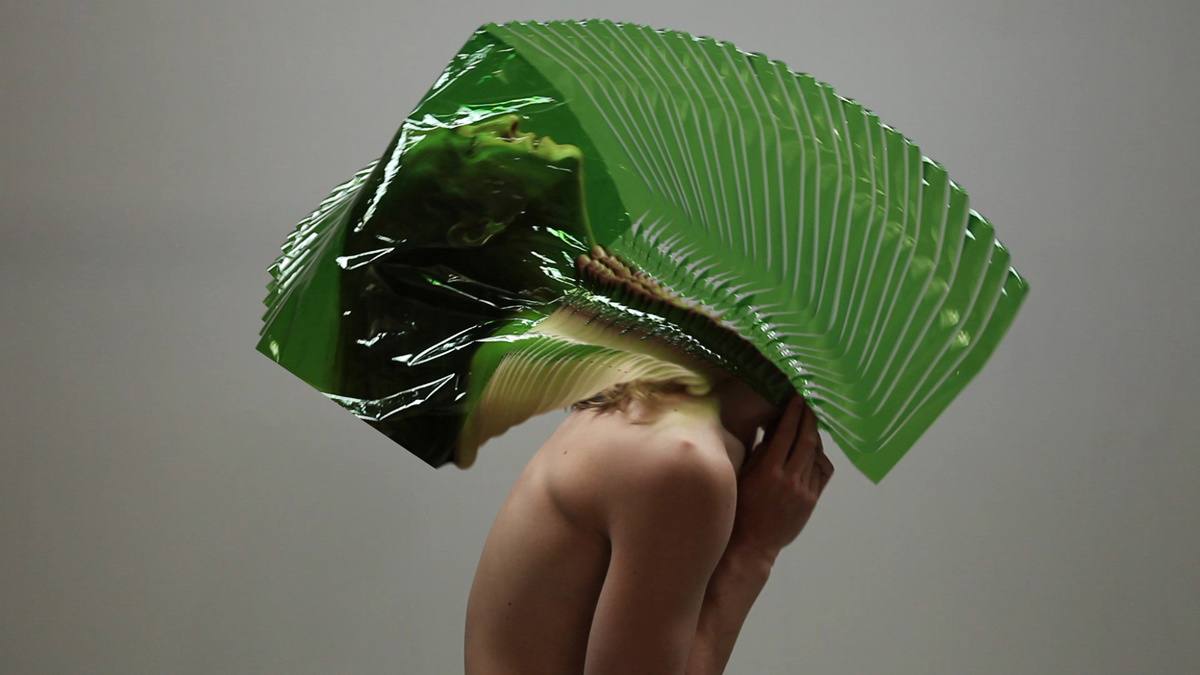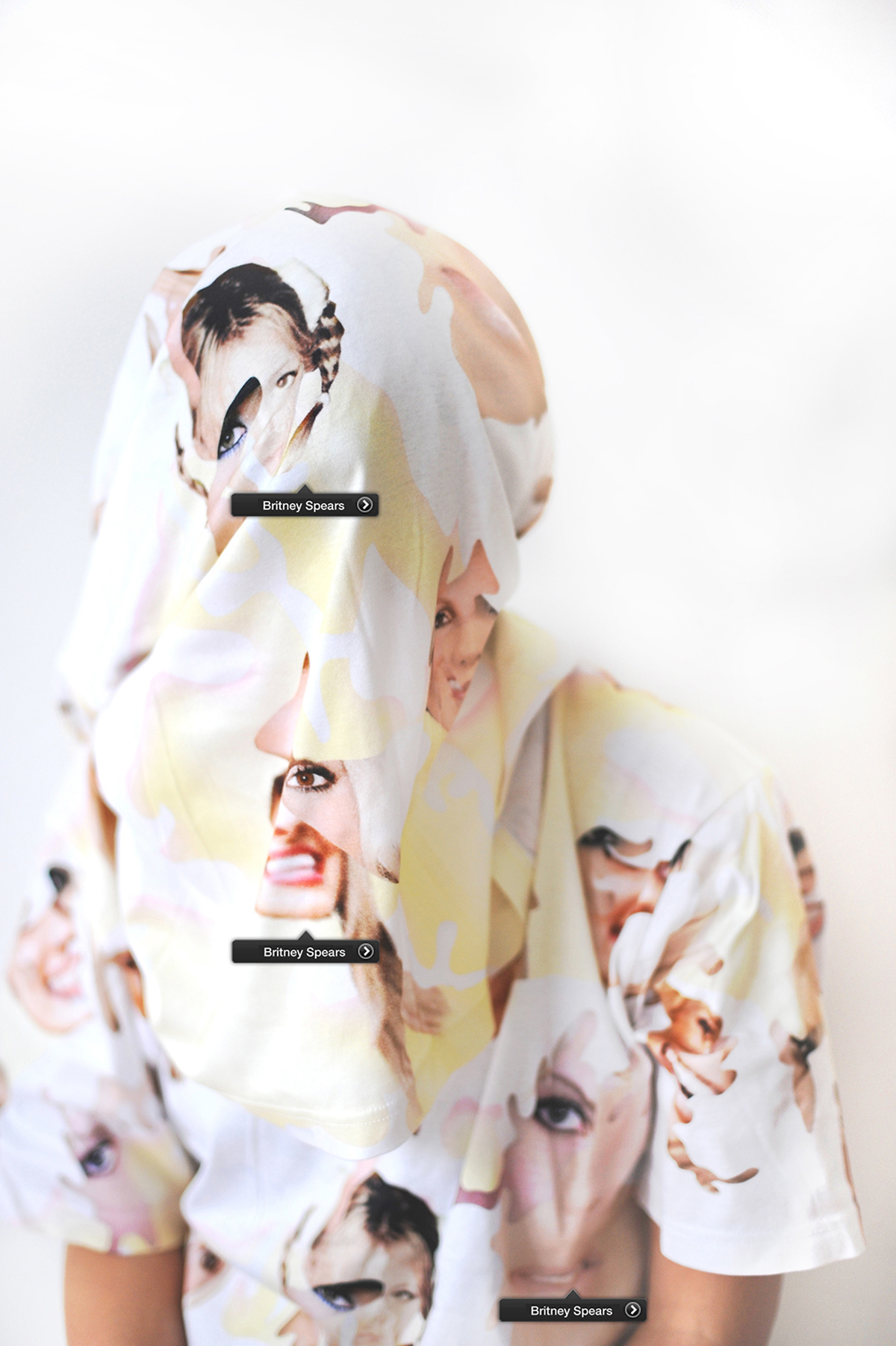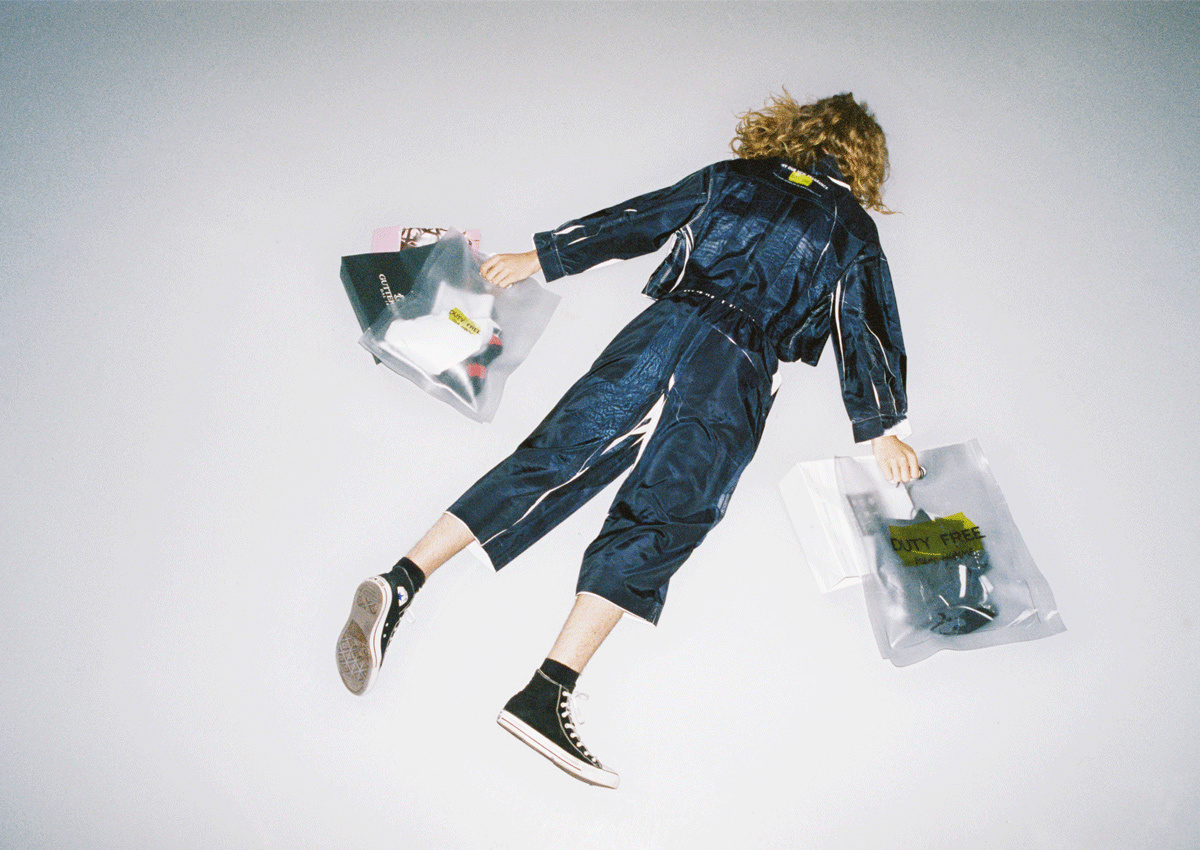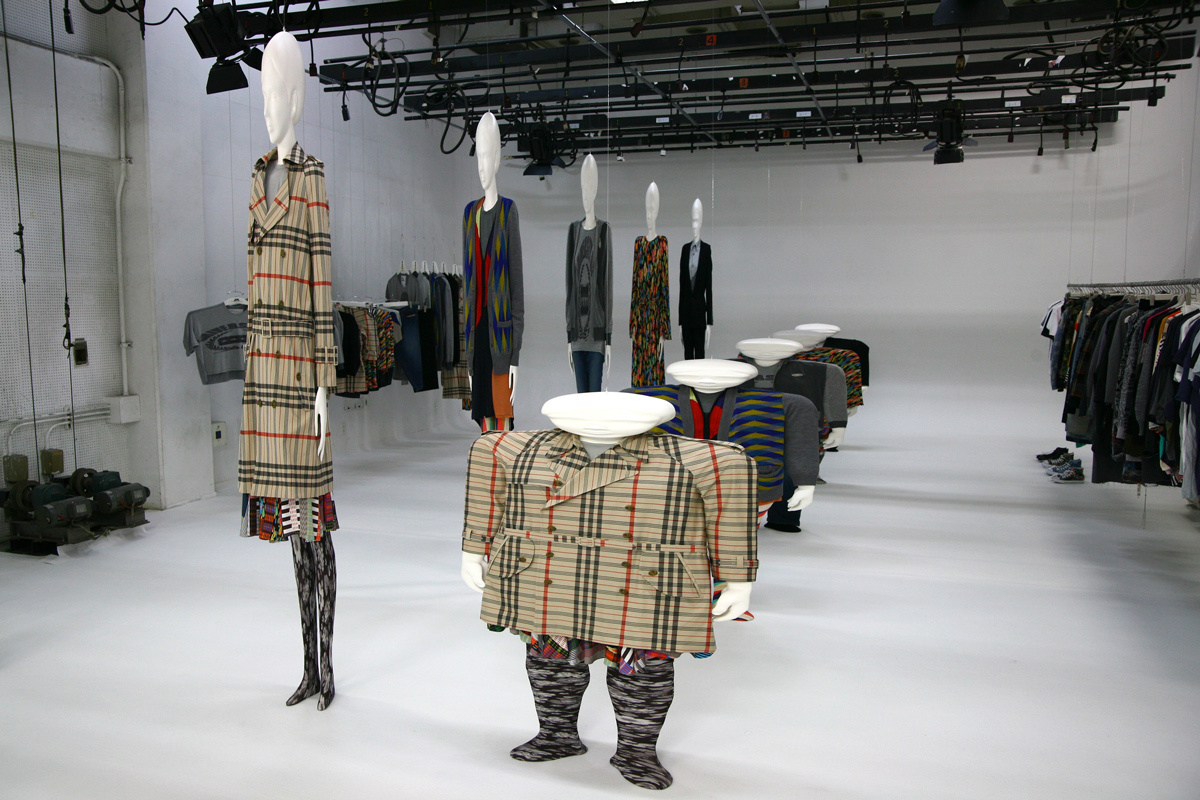Thanks to digital technology’s rapid development over the last 20 years, the ways we produce, distribute, and, most notably, consume fashion are entirely different. Digital Disturbances, a new exhibition at Fashion Space Gallery at London College of Fashion, explores the influence of these digital concepts and tools on the industry. Curated by Leanne Wierzba and featuring the work of seven designers and creative teams, the exhibition shows the radical side of silhouette manipulation, stimulates the virtual experience of touch and examines how we can fool the surveillance cameras that follow us everywhere we go. We chat to Wierzba about the potential, limitations and desirability of digital concepts in fashion…
What digital tools and techniques can currently be used in fashion design?
‘Digital’ is an overarching term used to describe a large number of different things, functions and interactions. I would argue that, as a new media, they connect across differentiated areas of fashion design, production, retail and communication. Perhaps the most significant overall effect on the fashion industry has been to blur distinctions between traditional roles and skillsets, and also between the professional and spectator. This is particularly true of fashion media, with fashion bloggers as an obvious example. Really, today anyone with a smartphone and some basic editing software arguably has at least has the technical capability to make a compelling fashion film.

Which designers are the most prominent users of digital concepts and tools in their designs?
The thinking around the exhibition began to develop several years ago in relation to a previous exhibition, which unfortunately had to be postponed due to building works. That exhibition was focused specifically on digital print design, which was such a big topic for London at the time, with designers like Mary Katrantzou and Peter Pilotto bursting onto the international scene with colorful and imaginative print designs. London has also, in many ways, been a leader in thinking about how fashion can be represented digitally, and of course Nick Knight and SHOWstudio have played a central role in this. Burberry is another brand that has self-consciously embraced digital tools across all areas of their visual identity, marketing and retail strategies. The weird aspect of this, at least for me, is that users have the potential of becoming brand content by interacting with it digitally, say by uploading a picture of themselves in their Burberry trench coat.
Do you think they are losing anything by moving from analog to digital techniques?
I love the quote by Douglas Coupland: “I miss my pre-internet brain.” When I saw him give a talk a few years ago at the Serpentine Gallery Memory Marathon, he elaborated by adding: “but I kind of like the way my new one is heading.” I think that’s exactly it. It’s hard to deny the impact of digital technology on our world and its many benefits. At the same time, it has also led to a loss of memory and privacy, as well as some traditional skillsets and values. What excites me now is how a new generation is embracing that and finding a language that incorporates both analog and digital techniques, sometimes without much distinction between them.

What are its limitations?
Digital tools are just that – another tool. It kind of perplexes me how the concept of ‘digital’ is often embraced with a kind of utopian fervor, as if it is the new, bright future. To me this feels quite limiting and often like a big distraction from some of the more pressing realities of the material world around us. I would argue that the limitations are not so much in the tools or technologies, but in our ability to understand and use them.
How do you think digital techniques will progress in the next few years?
I think that the focus will increasingly shift away from the novel aspects of experimentation around digital tools and applications to thinking about their role within our individual lives and society. I’m really excited by some of the work I see happening with 3D-scanning technology and the role it is playing in both surveillance and stealth strategies.

Tell us a bit about Simone C. Niquille’s REALFACE Glamouflage…
Realface Glamouflage is a collection of T-shirts that address the ubiquity and implications of facial recognition technology. The T-shirts are designed to confuse these devices by giving their wearer multiple identities. The collection uses dazzle, a style of camouflage that employs optical illusions to conceal the target. Each pattern is comprised of the faces of celebrity impersonators and pirated faces used for fake social media and romantic spam. The faces, repeated in multiples, raise questions of identity, privacy and verification. The project also indicates ways in which privacy, listed as a human right in many legal traditions, has been transformed into a commodity for sale.
What’s your opinion on facial recognition technology and its effect on our privacy?
I think that government mass-surveillance programs like Optic Nerve, which secretly intercepted ‘private’ Yahoo! Webchat conversations in order to build a database for future research and profiling, and the pervasiveness of sites like Facebook, demonstrate the profound effects that these tools are having on personal privacy. However, we also have to think about the way our data is tracked, packaged and monetized – often under the auspices of our own convenience – by corporations like Foursquare through smart technologies like our mobile phones. At the same time, the way that raw data is gathered and interpreted has obvious flaws. Niquille’s work humorously engages with how cultural phenomena such as celebrity impersonation and plastic surgery challenge fluid concepts of identity. The self, at this time, cannot be indexed in absolute terms.
Is 3D printing the future of fashion?
No.
What do you hope visitors take away from the exhibition?
I hope that this exhibition will provide visitors with an opportunity to think less literally about the impact of digital tools and concepts on fashion. So often the conversation seems to be quite limited to very practical concerns relating to digital print design, wearable technology, 3D printing, social media and e-commerce. With this exhibition, I hope to avoid literal, industry interpretations of digital fashion, while also grounding it in things that are really happening, rather than total speculations about the future of fashion. The exhibition provides an opportunity to investigate the digital imagination and how digital technology impacts on the ways in which we engage with ourselves and our surroundings as it becomes increasingly integrated into our daily experiences and interactions.
Credits
Text Felicity Kinsella
